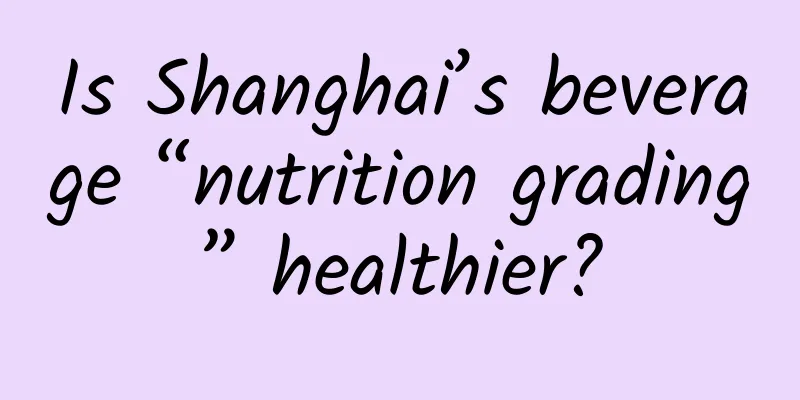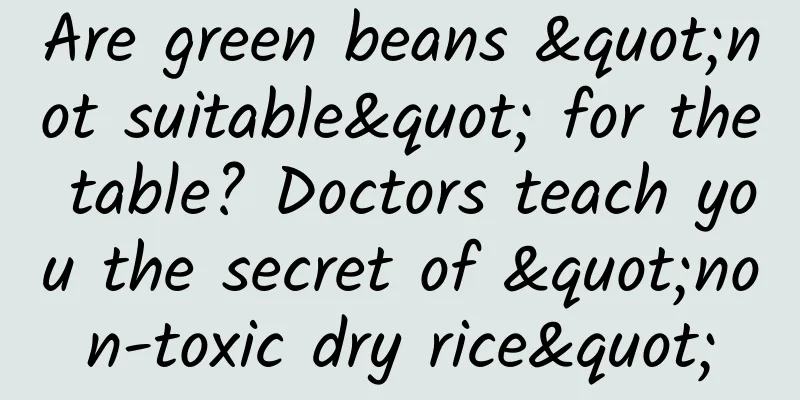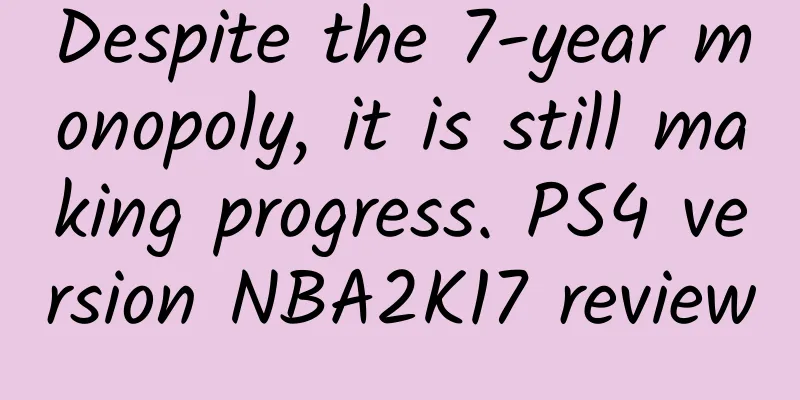Is Shanghai’s beverage “nutrition grading” healthier?

|
Recently, some beverages in Shanghai have begun to implement "nutritional grading", and grading labels with decreasing nutritional recommendations from A to D have appeared on beverage sales pages, product packaging, containers, and other scenes. Have my friends in Shanghai seen this sign? This is a new initiative launched by Shanghai to help consumers better understand the nutritional value of beverage products. Many people are concerned about how this grading system works, whether it is scientific and reasonable, and whether choosing according to it means being healthier. So, today we will talk about this issue. How are nutritional grades determined? Nutritional grading labels are a type of label that uses graphics to allow consumers to see the nutritional status of food at a glance, helping us make healthier decisions quickly when purchasing food. They will classify beverages into four levels: ABCD, and comprehensively grade the beverages mainly based on the content of non-dairy sugar, saturated fat, trans fat and non-sugar sweeteners in the beverages. Limit value ■The sugar limit values are 0.5, 5, and 11.5. 0.5 g/100ml is the limit for claiming "sugar-free" in the current national standard for pre-packaged foods in my country (GB 28050-2011), and 5 g/100ml is the limit for claiming "low sugar" in the national standard. 11.5 is the boundary for high sugar in the dietary guidelines, and beverages with a sugar content ≥11.5/100ml are high in sugar. ■Non-lactose sugars are sugars that are not lactose. Lactose mainly comes from milk, which means that the lactose in milk does not count. ■ Non-sugar sweeteners refer to what we often call sugar substitutes and sweeteners, such as erythritol, aspartame, acesulfame potassium, etc. ■Trans fat: The requirement of ≤0.3 g/100 ml for grades A and B is also the limit stipulated in the current national standard for claiming to be trans fatty acid-free. ■The two limit values for saturated fat are 0.75 g/100ml and 2.5 g/100ml. Generally speaking, products with less sugar, no sweeteners, less fat, saturated fat and trans fat are A\B grade products. What do you think? Some people are happy while others are worried about this "nutritional grading". Some people think this is a good attempt to make people more aware of the nutritional value of beverages when choosing them; others think it is just a formality and does not help much in terms of actual health conditions. So, how should we view this "nutritional grading"? First of all, we must understand that the original intention of "nutritional grading" is to let everyone more intuitively understand the nutritional value of beverages, so as to help consumers make healthier choices. From this point of view, its emergence is of positive significance. However, this "nutritional grading" may also be misjudged. For example, ■Pure freshly squeezed fruit juice has a sugar content of more than 5%, and many even exceed 11.5%, and should be classified as Grade C or D. ■The saturated fat content of whole milk is about 1.86g/100ml and should be classified as grade B or C. ■ A coffee or milk tea with milk, if more milk is added, may be rated B or C because of saturated fat. In this grading table, American coffee is A, and some lattes are C. In fact, I think that adding some milk to lattes is healthier than American coffee, and it can also make up for the loss of calcium. This classification also specifically points out that only those that do not use non-sugar sweeteners can be grade A , which means that as long as sugar substitutes are used, they cannot be grade A. This may be due to some previous controversies about sugar substitutes. However, the Healthy China Action Plan (2019-2030) clearly states: "Study and formulate guidelines for the limited intake of added sucrose for children in my country as soon as possible, and advocate the use of natural sweeteners and sweeteners as alternatives to drinking." "City people with high sugar intake are encouraged to reduce their consumption of sucrose-containing beverages and sweets, and choose natural sweeteners and sweeteners to replace sucrose-produced beverages and foods. Image from: "Healthy China Action (2019-2030)" I have said many times in the past that all approved sugar substitutes are safe. Drinking water or tea without sugar is of course the healthiest. However, if you want sweetness without sugar, sugar substitutes are still the best alternative. After all, we have another important need when eating and drinking - to enjoy deliciousness and happiness. In addition, "nutritional grading" is not omnipotent and cannot be relied upon entirely, nor should it be regarded as a "talisman" or "shield" for health. If you think that choosing grade A\B will make you healthier, you can let yourself go and eat desserts, braised pork, and fried chicken to your heart's content, but in the end it may not be that healthy. In general, the nutrition grading system implemented by Shanghai Beverage provides us with a reference and is a new measure worth trying, but it is not the only standard. We still need to consider various factors, combine our own physical conditions and needs, and reasonably arrange our daily diet and life to be truly healthy. Finally, as a nutritionist, I still want to remind everyone that the basic principle of healthy eating is to have a reasonable combination and eat in moderation. Under the premise of moderation, you can still enjoy delicious milk tea, beverages, etc. While enjoying delicious food, pay attention to maintaining a balanced diet and moderate exercise! Currently, there are 4 companies in Shanghai participating in the "Nutritional Choice" labeling pilot. This year, they have successively marked the "Nutritional Choice" grading labels that meet the requirements in eye-catching locations such as product sales menus, beverage packaging, online ordering procedures and sales locations in Shanghai. Let's wait and see what will happen next. |
>>: A "pyramid" appeared in Anlong, Guizhou? The special local landform created a wonder!
Recommend
McDonald’s community operation strategy!
More and more companies are starting to develop t...
What does a unified national market mean? How to build it specifically? Attach details
On April 10, 2022, the Central Committee of the Co...
If you often wake up early, be careful of these diseases!
Although people with poor sleep have their own su...
Where do domestic goats come from? The answer lies in their Tianshan "brothers"!
The steep cliffs seem like flat ground under thei...
Eleven Trends Predicted for New Consumer Brands in 2022
The collective rise of new consumer brands is und...
How can online and offline APPs complement each other’s strengths?
The specific strategies for enterprises to implem...
Is Google's opening up of 230,000 patents forcing domestic mobile phone companies such as Huawei and Xiaomi to surrender?
Written in front: Is free sharing necessarily a g...
The stronger the hot pot smell, the more additives it has? What is it that is stuck on your clothes?
Audit expert: Wang Guoyi Postdoctoral fellow in N...
It has been passed down for two thousand years, and it is direct evidence of the popularity of this story.
There is a treasure in the Sichuan University Mus...
90% of designers agree on these 7 design habits, but they may harm you
When many designers first start designing, they m...
How should novice webmasters optimize corporate websites?
"How do we optimize the corporate website?&q...
The transmission chain of the Xi'an epidemic has increased to 242 cases! 6 places have been linked. How did the epidemic spill over?
On the morning of December 23, Yuncheng, Shanxi r...
It’s heartbreaking that a woman fell from a building after being cyberbullied. How should we build a “psychological firewall” in the face of verbal abuse?
It’s heartbreaking that a woman fell from a build...
Toutiao account operation and promotion: How to increase fan stickiness and revenue?
In fact, most of the problems lie in the fan stic...









